While the Eiffel Tower, the Taj Mahal, and Mount Fuji may be the first images that come to mind when we picture beautiful landmarks, the truth is that there are numerous dazzling sights—both natural and man-made—right here in the United States.
The past century-and-a-half has seen the creation of two organizations that work together to protect America’s national treasures. After the first national park, Yellowstone, was established in 1872 to protect the natural beauty of its world-famous geyser basins and wildlife, the U.S. National Park Service was founded in 1916—and now oversees the preservation of 58 parks around the country. Later, the National Historic Preservation Act of 1966 created the National Register of Historic Places, to protect landmarks that specifically illustrate the heritage of the United States.
Not all of the landmarks on our list have been officially designated as state parks or National Historic Places. And, on their surface, many of them may seem dissimilar: one is an extraordinary (and still active) volcano, while another is a lighthouse; one is a mighty waterfall, while another is a centuries-old desert adobe settlement. But what’s amazing is that these landmarks, disparate though they are, share a home right here on U.S. soil. And all of them have played a part, however small, in our national history.
Niagara Falls, New York
More than 750,000 gallons of water per second thunder down this iconic 167-foot waterfall—the most powerful on the North American continent. The falls straddle the border between the U.S. andCanada, and though some argue that Horseshoe Falls—set on the Ontario side—is more spectacular than the smaller American Falls, the landmark has held a particular place in American history ever since 1901, when Michigan schoolteacher Annie Edson Taylor was the first person to go over the falls (and survive) in a barrel.
How to See It: Take a half-hour water tour on the Maid of the Mist ferry, which has boarding docks in both countries.
Mount Rushmore National Memorial, Keystone, South Dakota
Carved into a granite mountain face in South Dakota’s southwesterly Black Hills, this sculpture of four of America’s most influential presidents (Washington, Jefferson, Lincoln, and Theodore Roosevelt) was considered an extraordinary feat of engineering when it was completed in 1941—and it’s still majestic today, bringing in more than two million visitors per year.
How to See It: If you visit in winter, you’ll be able to avoid the summer crowds and see the monument dusted with snow. In warmer months, though, try to catch the evening lighting ceremony (starting at 9 p.m.), where park rangers slowly illuminate the enormous granite faces above.
Golden Gate Bridge, San Francisco
Stretching 1.7 miles high above the mist-enshrouded waters of San Francisco Bay, this peaked, vermilion-painted suspension bridge (the color is officially known as International Orange) is as striking today as it was when it was completed in 1937. The natural surroundings—including the coves and forested bluffs of Marin County; the island of Alcatraz; and numerous sailboats, barges, kite-surfers, and even frolicking seals—can all be seen from the bridge on a clear day.
How to See It: Walking at least partway along the bridge’s pedestrian path allows for the most dramatic views (and best photo ops).
The Wave, Coyote Buttes, Arizona
Set in the remote Paria Canyon-Vermilion Cliffs Wilderness in northern Arizona, this dazzling rock formation, which looks like a cresting wave frozen in time, isn’t easy to access: you’ll need a permit from the Bureau of Land Management, which allows only 20 people per day to visit the delicate landform. But getting to see this fiery swirl of Jurassic-age sandstone, carved by the wind more than 190 million years ago, is well worth a little advance planning.
How to See It: From the Wire Pass Trailhead, it’s a three-mile hike out to the Wave over sandy terrain. Summer temperatures soar to more than 100 degrees, so bring plenty of water.
The Giant Forest, Sequoia and Kings Canyon National Park, California
Located in the southern Sierra Nevada Mountains, this three-square-mile forest of massive giant sequoias is home to the General Sherman Tree, the world’s largest tree by volume (52,508 cubic feet). The other trees here are jaw-dropping, too—on average, they are as tall as 26-story buildings and have base diameters wider than many city streets. Equally awe-inspiring as these conifers’ grand size, though, is their age: most are between 1,800 and 2,700 years old.
How to See It: If you’re short on time, take a two-mile hike through the Giant Forest on the Congress Trail, which begins at the General Sherman Tree. With more time to explore, though, you’ll want to take the steep quarter-mile staircase to the top of Moro Rock, a granite dome that offers gorgeous views of the Great Western Divide and the forest below.
Kilauea Volcano, Hawaii Volcanoes National Park, Hawaii
The legendary home of Pele, the Hawaiian volcano goddess, this 4,091-foot-high peak is located on the southeastern part of the Big Island of Hawaii. Appropriately named after the Hawaiian word for “spewing” or “much spreading,” this is one of the world’s most active and dangerous volcanoes. Continuous eruptive activity has occurred here since 1983, creating devastating-but-beautiful lava flows that have etched their way across the dramatic landscape.
How to See It: Take Crater Rim Drive, an 11-mile road that circles the summit of Kilauea, for panoramic views of the volcanic landscape. Since access roads often shut due to volcanic activity, though, be sure to check for closures before you visit.
Taos Pueblo, Taos, New Mexico
Set at the base of the majestic Sangre de Cristo Mountains, this multistoried adobe compound is one of the country’s best-preserved Pueblo Indian settlements. The pueblo, which was built before 1400 and is one of the oldest continuously inhabited communities in the States, consists of ceremonial buildings and individual homes built from adobe—bricks made from earth mixed with straw and water—and decorated with bright turquoise doors. While visitors are welcome, approximately 150 people are lucky enough to call this UNESCO World Heritage Site and National Historic Landmark home.
How to See It: You’re welcome to wander around in the Pueblo as you like—but be respectful by only entering clearly marked shops, as most homes in the pueblo are privately occupied. (As a courtesy, you should also ask for permission before photographing Pueblo residents.)
Washington Monument, Washington, D.C.
This stately 555-foot monument, built in the bladelike shape of an Egyptian obelisk and completed in 1884, is the most prominent structure in the American capital city. Built in honor of the nation’s first president, the marble monument has served as a backdrop for some of the country’s most historic moments, including Martin Luther King, Jr.’s “I Have a Dream” speech and Barack Obama’s presidential inauguration. It’s at its most beautiful when mirrored in the Reflecting Pool at sunrise or sunset, and especially on the Fourth of July with evening fireworks bursting overhead.
How to See It: Though admission into the monument is free, tickets are required and long lines form to get inside every day. A better bet: enjoy the exterior of the monument from the steps of the Lincoln Monument, or from the tidal basin during the National Cherry Blossom Festival in April.
Portland Head Light, Cape Elizabeth, Maine
Illuminated for the first time in 1791 by whale-oil lamps, this lighthouse is located within the beautifully landscaped grounds of Cape Elizabeth’s Fort Williams Park. Attached to a red-roofed Victorian keeper’s house, the 92-foot-tall white conical tower is often seen as a symbol of Maine’s beauty. From its location on a commanding point at the southwestern entrance to the harbor, you can take in crisp salt air as well as endless views of the ocean and rocky coastline for which the state is known.
How to See It: Fewer than 300 tickets are given out to climb the tower on Open Lighthouse Day, a September event put on by the Coast Guard, the State of Maine and the American Lighthouse Foundation. You can also enjoy the lighthouse in a more leisurely manner, by gazing up at it while picnicking in the park or visiting the museum.
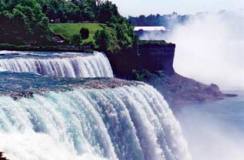
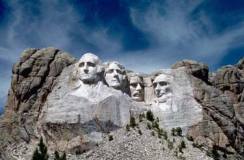
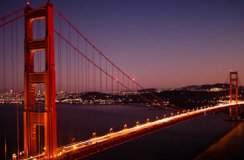
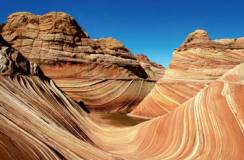

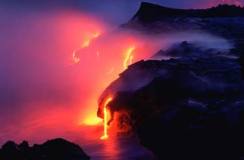
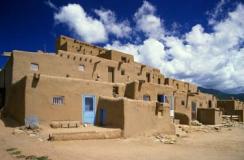
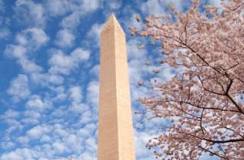
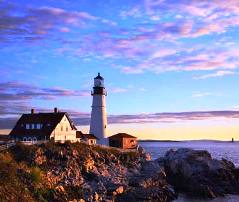
No comments:
Post a Comment